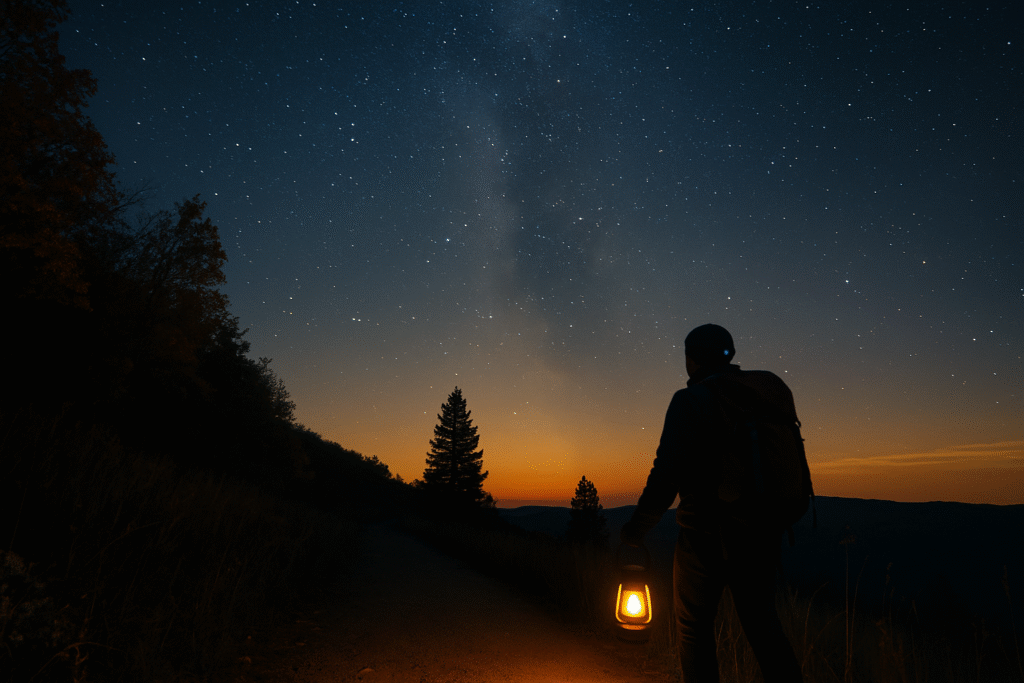
Unique Fall Adventures: Night Hikes, Stargazing & Lantern Walks
When the Sunset Fades, the Adventure Begins
It was a crisp October evening when I slipped on my headlamp just after sunset and set off down a forest trail. I realized that fall—when the sun sets earlier—offers a fresh invitation to explore the wild in a whole new way. Let’s walk through how the early darkness can unlock unforgettable outdoor experiences that blend wonder and safety.
Why Fall Is Ideal for Night Adventures (Midwest & Beyond)
- Early sunsets make stargazing and hiking more accessible, especially for families.
- Cooler air = clearer skies. Less haze, less humidity.
- Less light pollution in remote Midwest parks like Kettle Moraine, Indiana Dunes, and Cherry Springs.
1. Night Hikes: Trekking After Twilight
Gear musts: Headlamp with red light mode, moisture-wicking base layers, windproof shell, map/compass or GPS. Stay on marked trails, hike with a partner if possible, and let your eyes adapt to the dark before relying on artificial light.
2. Stargazing & Star Parties
Fall is ideal for viewing constellations and meteor showers like the Geminids or Orionids. Use astronomy apps, plan around new moons, and explore top spots like:
- Cherry Springs State Park (PA)
- Arches & Canyonlands (UT)
- Pisgah National Forest (NC)
Most events are free or donation-based and welcome beginners. Bring blankets, hot tea, and dress in layers.
3. Lantern Walks: Family-Friendly Magic
Many nature centers offer autumn lantern walks—gentle guided trails lit by lanterns with stories, wildlife lessons, and history. These events are perfect for all ages and typically run from September through November.
Real Life Experiences
Cherry Springs State Park: I once joined a ranger-led event where I watched the Milky Way overhead and learned constellation stories rooted in Indigenous tradition. It felt like nature’s planetarium.
Kettle Moraine (WI): Hiked at dusk, stayed still at a viewpoint, and watched as the stars emerged—no headlamp needed for a good 20 minutes.
Pros & Cons
| Activity | Pros | Cons |
|---|---|---|
| Night Hiking | Exciting, peaceful, cooler temperatures | Requires gear, navigation skills, safety prep |
| Stargazing | Educational, awe-inspiring, family-friendly | Weather-dependent, may involve travel |
| Lantern Walks | Safe, guided, community-oriented | Limited availability, may book fast |
FAQ
Is night hiking safe?
Yes, if you plan well, bring safety gear, and know your trail. Hiking in groups or joining events is highly recommended.
Where can I find stargazing events?
Check your local state parks, nature centers, or dark-sky.org for upcoming star parties and lantern walks in your area.
What gear should I bring?
Headlamp (with red light), warm layers, sturdy boots, snacks, water, trail map, and emergency contact tools.
Ready to Try It?
If you've never hiked by moonlight or gazed up at a fall sky while deep in the forest, you're missing something magical. Let this be the season you embrace fall’s early nights and discover new trails lit by stars, not screens.
🔗 Want more fall trail inspiration?
Browse all our reviews and gear guides to find what you need for a safe and memorable experience this season.